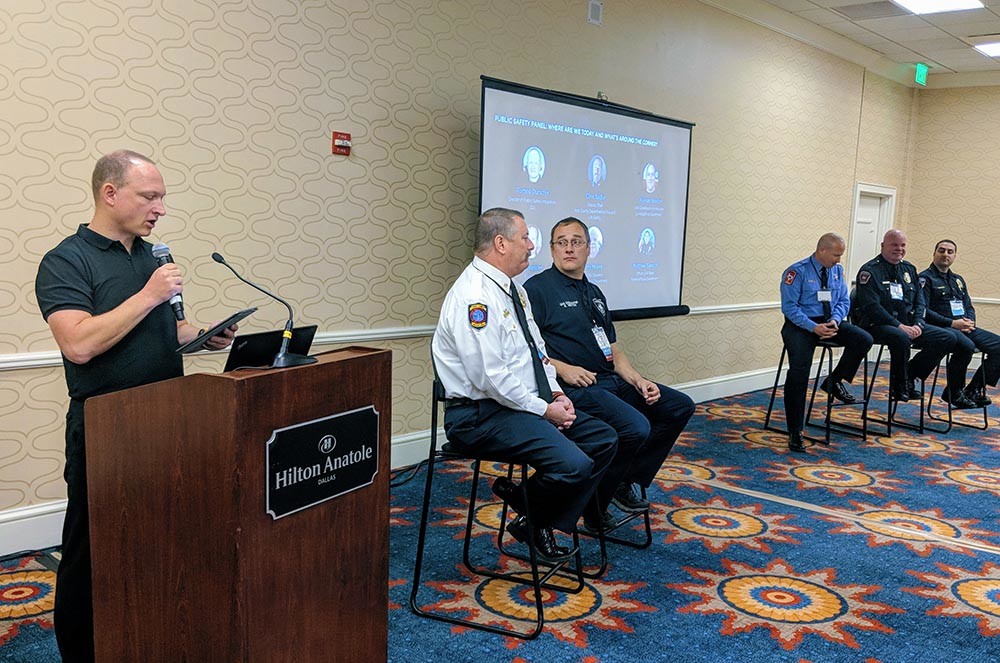When word about Romeo Durscher leaving DJI got out, the entire drone industry celebrated what his efforts as an advocate of UAV technology have meant to individuals and entire organizations. Countless people conveyed their thankfulness for his work to define how drones could be used in a practical sense for public safety departments of all types and sizes to literally save lives. However, underneath these expressions of gratitude was also a hint of concern, because if Romeo would no longer be such a champion for drone technology as a whole, and specifically for public safety applications, how would that gap be filled?
 Thankfully, Auterion has made that question moot with their appointment of Romeo as the company’s new Vice President of Public Safety. Being the same type of champion for drone technology that we’re all familiar with defines Romeo’s new role, as it will be his mission to help first responders fully realize the potential of their drone systems with open source software.
Thankfully, Auterion has made that question moot with their appointment of Romeo as the company’s new Vice President of Public Safety. Being the same type of champion for drone technology that we’re all familiar with defines Romeo’s new role, as it will be his mission to help first responders fully realize the potential of their drone systems with open source software.
As the former Senior Director of Public Safety Integration at DJI, Romeo has worked on countless drone solutions all over the world, but he’s been intimately involved with the technology itself for almost a decade now. The first few years he was more of a hobbyist, which taught him the importance of public perception, aerial photography and what technology improvements would be needed. He joined DJI with the intention to evaluate how drones could be integrated into established enterprise workflows. The lessons and insights from doing so will be utilized and taken to the next phase of enterprise adoption and integration at Auterion.
“Over the last 6 years we learned a lot,” Romeo said. “I see this time as being Phase 1, which was all about understanding where drones fit in the commercial market and then creating use-cases. Phase 2 was about capturing lessons learned and using that information to help build the next generation of solutions. Now I truly believe we have reached Phase 3, which goes beyond the hardware capabilities. Open source software solutions allow for much needed transparency because the code can be audited and verified. Even more important is that open source allows for more targeted solution development now and into the future.”
Romeo is set to lead the strategy and go-to-market for Auterion’s suite of products for the Public Safety sector, which makes it sound like he’s set to take on more of a behind-the-scenes role. However, he has assured us that he’ll continue to be very hands-on with end-users. That’s partly because one of Romeo’s strengths has been the ability to get a very good understanding of a need, develop a potential solution, and use all of that to tell a story about the technology. Such stories are essential to bolster a positive public perception of drones, and Romeo will continue to rely on the close relationships he’s established with users to develop solutions, test them and refine them in order to tell these stories.
The solutions that he’ll be developing and refining will utilize Auterion’s ecosystem of software-defined drones, payloads, and third party applications within a single easy to use platform based on open-source standards. That will mean a different type of approach to and application of the technology than some are familiar with, but this new approach brings new opportunity with it, especially since the limitations with proprietary software solutions are more noticeable than ever.
“Open source is transparent and is built on proven standards,” Romeo told Commercial UAV News. “That alone enables users to focus on developing and perfecting their use cases, allowing them to focus on the critical work they have on hand, instead of worrying about what they don't know, such as data security, unstable platforms, software bugs, etc. open source catapults the industry to be able to come out with newer, better, more effective solutions in a much quicker manner, which ultimately gives operators more choice and flexibility. The drone itself is a very important tool and the industry has seen that the right software and data distribution is becoming as important, and even more important, in the future.”
That future for the technology and industry is one that Auterion is shaping in a big way with people like Romeo and Cynthia Huang joining the company. They’re looking at the immediate future in the next 3-12 months, but are also actively considering the next generations of solutions, mid to long term. This kind of outlook brings stability and continuity for users, which is especially critical for public safety departments exploring how they can and should be using the technology.
First responders will now have brand new opportunities with drone technology thanks to Auterion’s open-source ecosystem, but what will it mean for them to do so? And how can users or potential users start or still work with Romeo to explore their options?
“We are still so early on in the use of drones and their data and we will come across needs that we are not even thinking about it yet,” Durscher said. “My advice is to reach out to us, learn with us, and become instrumental in developing needed features, solutions and data products. Departments may currently be set with solutions for today's type of missions and deployments. But the early adopters already see what else is needed for deeper integration and better data, to scale up operations. So I encourage departments to reach out and start the process together with us.”
Learn more at www.auterion.com.















Comments